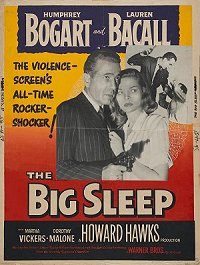30 x 40's measure 30" x 40" and are printed vertically
on a very heavy card stock material.
30 x 40's were initially released in the US as advertising
materials in the 1930's. They were primarily issued for major motion pictures
only. They were displayed both inside (balconies, lobbies) and outside (bus,
train, subway depots) of theatres. Their heavy card material made them more
durable than paper.
 Initially,
30 x 40's featured the same artwork as the one-sheet
but gave a more durable poster for outside advertising, but the 1950s and
1960s saw a wide variety of different artwork for 30x40s including dayglo
and silk screening (like the one shown on the left).
Initially,
30 x 40's featured the same artwork as the one-sheet
but gave a more durable poster for outside advertising, but the 1950s and
1960s saw a wide variety of different artwork for 30x40s including dayglo
and silk screening (like the one shown on the left).
The National Screen Service (NSS) number is normally found
on the side on the poster, as opposed to the bottom right corner as is the
case with one-sheets.
30 x 40's were normally shipped in rolled condition to
the theatre exchanges and stored flat.
30 x 40's were a main tool in the advertising arsenal on
major films until the 1980's.
30 x 40's were printed in smaller numbers than were other
sizes of advertising materials. Due to their beautiful artwork and their
limited release, 30 x 40's are sought-after by some collectors, but were
never as popular as the one
sheet, even though they were issued rolled. One possibility is that
because they are card stock, once they start to crack, they show very poorly
and are harder to restore. Since these materials were shipped to the exchanges
in rolled condition, 30 x 40's lose some of their value if they are folded.
It was also very common for theater managers to FOLD the
30x40s, which reduces the value in the collectors market.












